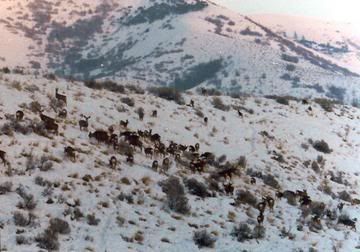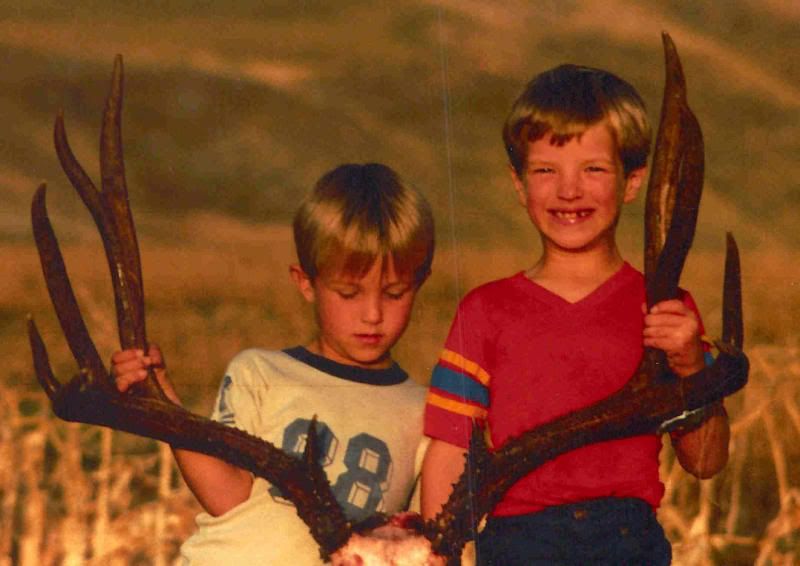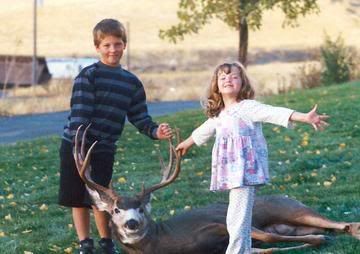The truth is – none of us may ever know what the DWR decision makers were or are really thinking. Most of what they do defies logic.
Nevertheless, all of the LE areas were once open areas because the whole state was open. Until the lions, coyotes, and bears took over, a person could buy licenses and tags over-the-counter, right up until the time when you decided if you wanted to go or not. It was then a 10 day season and you could go where the deer were, or anywhere else for that matter. Then predator populations began to boom. They were protected from being poisoned. Trapping rules were implemented. Seasons and limits were set. Predators were given priority over hunters. When the long-awaited time finally arrived that there were not enough deer for both humans and predators, then it became quite noticeable, particularly in those areas that are now limited entry, that there were no deer.
Whoah! What’s up with that? Predators don’t affect deer populations, do they? Let’s do a study to prove that predators have no negative impact on deer. Outcome pre-detirmined.
OK, conclusion: predators have no negative impact on prey. There are too many hunters. Darn it anyway. Let’s make regions and units to confine the hunters. Let’s cut the number of hunters in half. Let’s try and force the hunters to go where the deer aren’t. Let’s shorten the seasons. Let’s implement a hunter lottery on the basis of the scarcity principle. Let’s get the hunters to believe we need to “conserve” deer. Let’s make up stories about how many deer and how few predators there really are. It’s all history now.
Utah now manages people for the predators while “conserving” deer. Today, predators kill almost ten times as many deer as people do, and that’s even if we include road kill. It’s a little OUTABALANCE! The limited entry units and especially the “premium” limited entry units came into existence after those areas were closed for “studies”. Rather than just turn the deer hunters loose on those areas that hadn’t been hunted for a while, and go right back to no deer, it was evident that there had to be some “controls”. None of the limited entry units was restored to its former glory even with no hunting – because of predators. But, any of them were better than the rest, if only because hunting had ceased for a while. Some of the LE units are now no better than the rest – even with almost no hunters.
No, they didn’t pick the areas with the most potential for limited entry. They probably never will.
The DWR announced a long time ago – that it was their entention to divide the state into small units and make the whole state limited entry. The time may well come when you have to check in and check out at the bottom of the mountain you want to hunt – fingerprints and the whole works. Heaven forbid anyone should suggest it.
 As recently as 1988, mule deer herds were doing well -in fact, near an all-time population high. Since that time, mule deer have declined and have not recovered. The major cause for the original decline was rooted in the effects of weather. Mule deer herds have always been impacted by weather, but have typically been able to recover quickly from drought or severe winter. Possibly, the worst weather related situation affecting mule deer is when a drought is followed immediately by a severe winter. If there is ever a time to supplement or to call for an emergency hunt, that would be it.
As recently as 1988, mule deer herds were doing well -in fact, near an all-time population high. Since that time, mule deer have declined and have not recovered. The major cause for the original decline was rooted in the effects of weather. Mule deer herds have always been impacted by weather, but have typically been able to recover quickly from drought or severe winter. Possibly, the worst weather related situation affecting mule deer is when a drought is followed immediately by a severe winter. If there is ever a time to supplement or to call for an emergency hunt, that would be it.
 Enjoy your visit. If you are looking for something that pertains to MULE DEER, we hope you will find what you are looking for here.
Enjoy your visit. If you are looking for something that pertains to MULE DEER, we hope you will find what you are looking for here.